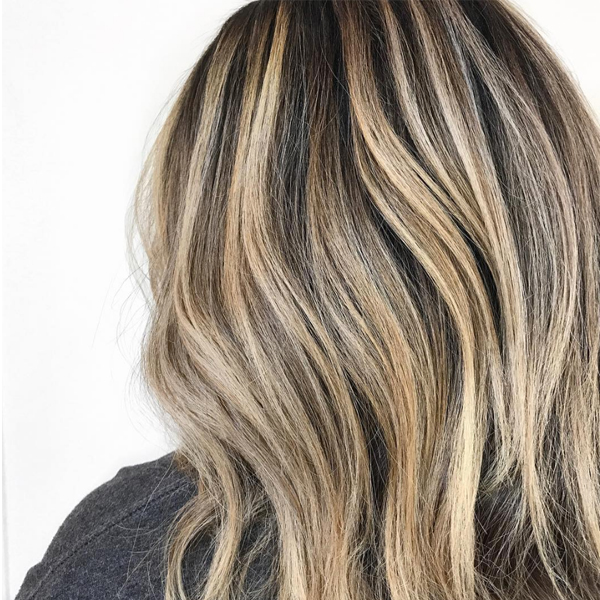Updating Balayage for Fall: High-Contrast Dimension
You’ve been taking your client blonder and blonder for a while, but she’s ready to transition to a deeper balayage for fall. Reverse balayage (working with lowlights as you would lightener) is a great way to create super dimensional balayage by enhancing the contrast between her already-lightened pieces. An expert at this technique? Jamie Sea (@prettylittleombre). Watch her quickie how-to below!
Products Used
But first, her color formula:
Formula A: Redken Shades EQ 3NB + Shades EQ Processing Solution
Formula B: Redken Shades EQ 9NB + Shades EQ Processing Solution
Formula C: Redken Shades EQ 3N + Shades EQ Processing Solution
Formula D: Redken Shades EQ 9V + equal parts Clear + Shades EQ Processing Solution
Application
- Melt Zones 1 and 2 with Formula A. Melt the end of Zone 2 into Zone 3 with Formula B. Process for 20 minutes, rinse and dry.
- Using the lightener of your choice, balayage alternate panels of gradient wide planks, singles and deep Vs.
- Balayage lowlights (reverse balayage) using Formula C in subsections. Process under gentle heat for 25 minutes, then rinse.
- Gloss with Formula D for 15 minutes to soften the tone.
A few more tips from Jamie:
- “To get the most pop in your high-contrast looks, make sure your highlights and lowlights are at least 2 to 3 levels apart, otherwise they will appear too one-dimensional. For example, if your projected highlights are Level 8, make sure your lowlights or color melt is a Level 5 or 6 to ensure enough contrast.”
- “The thicker your section, the larger the built-in lowlight, which means a subtler effect and more dimension. With thinner sections, you will achieve more overall brightness with a smaller built-in lowlight.”






